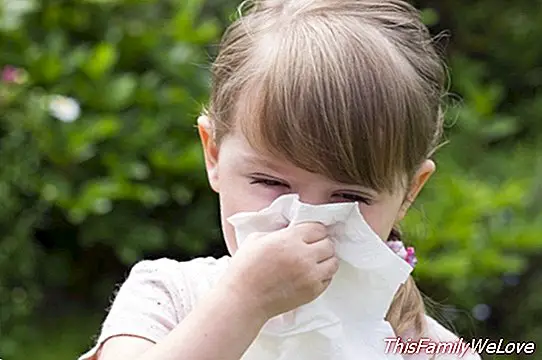Allergic rhinitis in children: affects almost 22 percent

Allergic rhinitis, inflammation of the rhinosinusal mucosa by the action of environmental antigens, such as pollen or dust mites, or labor affects almost 22% of the population, being very frequent in childhood. It is characterized by an increase in nasal discharge, obstruction and nasal congestion with nasal itch and palate.
There is two types of allergic rhinitis: the perennial or persistent rhinitis, which is usually present almost all year round and is related to allergies to fungi or dust mites, and seasonal or intermittent rhinitis, which usually present symptoms during the pollination periods of each species.
Although the symptoms may be confused with those of the common cold, those of allergic rhinitis are usually more chronic and are perpetuated while the antigenic stimulus persists, while in viral or catarrhal rhinitis, which usually occurs in the context of epidemic infections in schools and nurseries, are usually accompanied by infectious symptoms with a fever of 48 hours, some degree of impairment of the general state and usually does not last more than 5-7 days.
A correct diagnosis and treatment to avoid complications
In 3 out of 4 children with allergic rhinitis may appear associated diseases as conjunctivitis, asthma, atopic dermatitis, rhinosinusitis, otitis media and adenoid hypertrophy. According to Dr. Javier Hernández Calvin, Associate Head and Head of the Pediatric ENT Unit at Quirónsalud University Hospital Madrid and Quirónsalud San José, "especially in childhood, obstruction of the nasal passages predisposes to the appearance of complications derived from the lack of ventilation of the cavities of the middle ear and paranasal sinuses On the other hand, nowadays it is considered that rhinitis and allergic asthma are different clinical expressions of the same inflammatory disease that affects the entire respiratory tract ".
The importance of a correct diagnosis and treatment of this disease is essential. The diagnosis is fundamentally clinical, although it is supported by laboratory tests such as the determination of specific and total type E immunoglobulin, nasal and serological eosinophilia and prick test "both allergic rhinitis and non-allergic rhinitis have shown being a risk factor for the development of bronchial asthma and, therefore, the control of rhinitis and its prevention are essential factors in preventing the progression and exacerbations of bronchial asthma, "says Dr. Hernández Calvín.
Antihistamines for the symptoms of allergic rhinitis
Train the patient, especially in the case of children, so that avoid contact with allergens and contaminants, together with the use of drugs, will be the guidelines to follow. The pharmacological approach involves the use of antihistamines of second generation next to the nasal administration of topical glucocorticoids. Antihistamines are more effective in controlling the symptoms of nasal and ocular pruritus, while topical nasal corticosteroids are more effective in improving congestion. Ocular topical antihistamines, chromones and antileukotrienes can also be used, the latter especially if there is an association with asthma.
Children sometimes do not tolerate conventional treatments with nasal corticosteroids and antihistamines, as nasal dryness and episodes of bleeding frequently occur and parents are concerned about the continued use of corticosteroids at an early age. Therefore, especially in childhood, nasal washes can be made with hypertonic or isotonic solutions and compounds destined to preserve the integrity of the nasal mucosa and to avoid the contact of the different aeroallergens with the cells of the respiratory mucosa be administered.
Marisol Nuevo Espín
It may interest you:
- Pollen allergy: what is allergic rhinitis?
- Allergy, relief with natural therapies
- Child allergy or catarrh
- Can allergic rhinoconjunctivitis be prevented?




